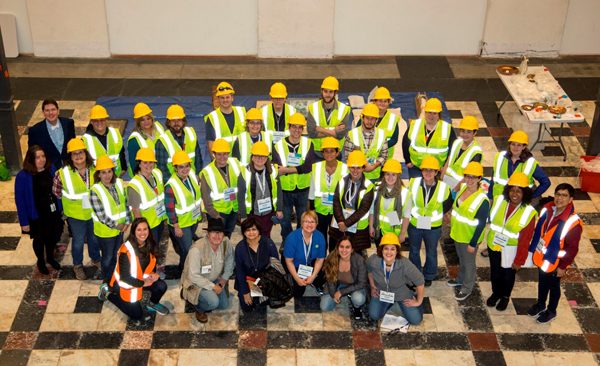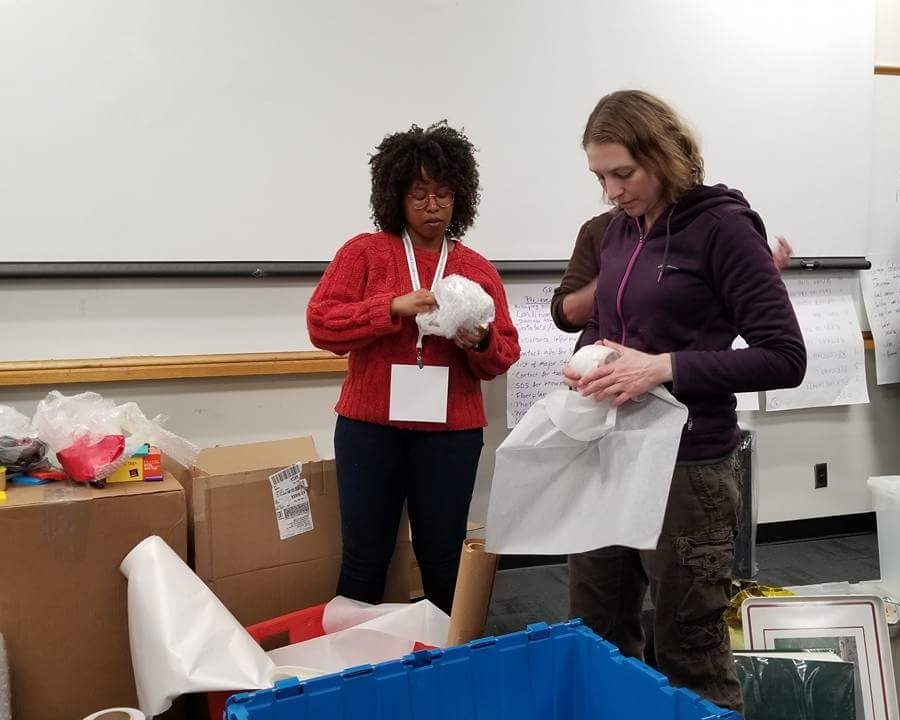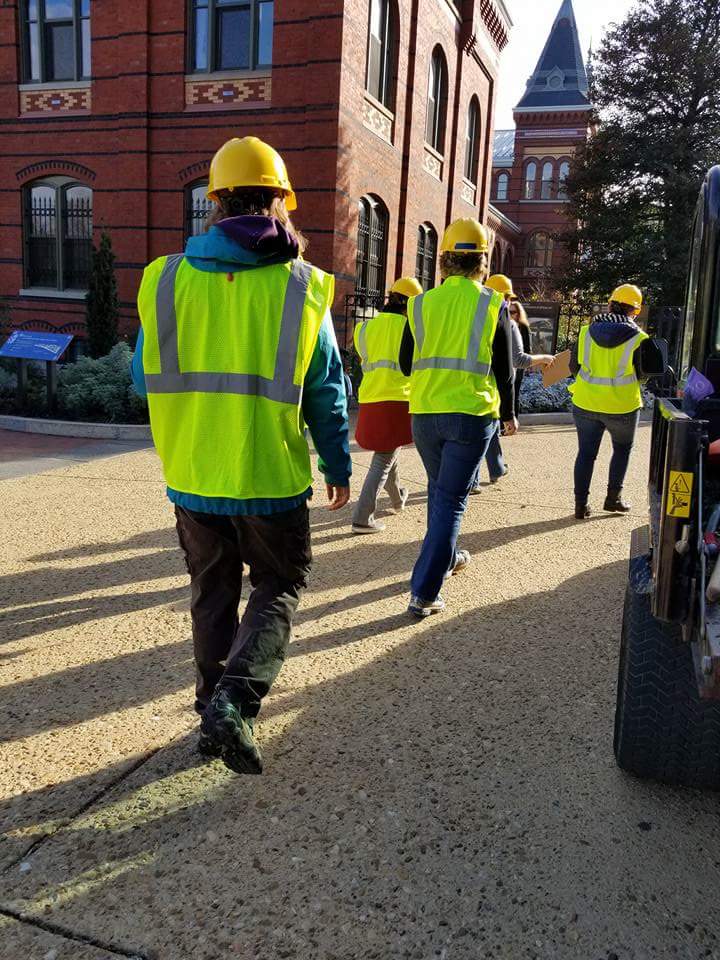Within the first twenty years of the Chicago History Museum’s establishment in 1856 (then the Chicago Historical Society), the building burned down twice. Since then, it has relocated, expanded, and experienced other minor emergencies, as can happen with any building over time. As an institution that actively collects and preserves Chicago history, however, it’s in our best interest to plan for potential disasters—both small and large—and be able to respond in a manner that does our best to ensure that our cultural heritage can be shared with future generations. Disasters can happen at any moment and affect museums all over the world. We see this happening today with greater frequency and impact as communities continually brace themselves for hurricanes, earthquakes, and other calamities, whether natural or man-made.

All twenty-five HEART program participants (in yellow vests) and instructors. Photograph by Michael R. Barnes, Smithsonian Institution
While CHM collections staff have participated in emergency training in the past, I have been eager for a more intensive program to put my existing knowledge to practice. Recently, I was selected as one of twenty-five museum collections care and emergency management professionals from across the nation to participate in the inaugural Heritage Emergency and Response Training (HEART) program. The training was hosted by the Smithsonian Institution and developed by the Heritage Emergency National Task Force (HENTF), a partnership of federal agencies and service organizations co-chaired by the Smithsonian Cultural Rescue Initiative and FEMA. After completing a pretraining webinar, the twenty-five of us representing twenty-one states and the territory of Puerto Rico met in Washington, DC, for a full week of museum emergency preparedness and response training.

Britta (right) and another attendee practice the proper way to pack and evacuate artifacts. Photograph by a HEART program participant
Each day was filled with a combination of presentations and hands-on workshops that addressed damage assessment, emergency evacuation and salvage of museum objects, crisis communication, leadership, and team building. We put our new knowledge to the test by role-playing a realistic scenario that involved the emergency assessment and evacuation of artifacts from the fictional museum “Smithsonia.” We were divided into teams of five and assigned specific tasks in order to safely complete the drill. I found myself responsible for setting up a temporary storage facility to process the evacuated artifacts and was then reassigned to assist with the physical packing and evacuating of artifacts. One takeaway from this drill was that while having an institutional emergency plan is essential, acting out the physical motions for that plan is the most practical way to learn how prepared an institution is for an actual emergency situation.

Britta (left) heads into “Smithsonia” to assess the damage. Photograph by a HEART program participant
By the time I returned to Chicago, I was inspired by everything I had learned and motivated to implement the training I received to improve our existing emergency plan. I also intend to reach out to other local cultural institutions to expand our response network. While we can’t always predict impending disasters, the Chicago History Museum staff is doing all we can to be prepared and to preserve the city’s heritage for the next generation.
- For more information, read The Atlantic‘s article about the HEART program
- Explore our collection